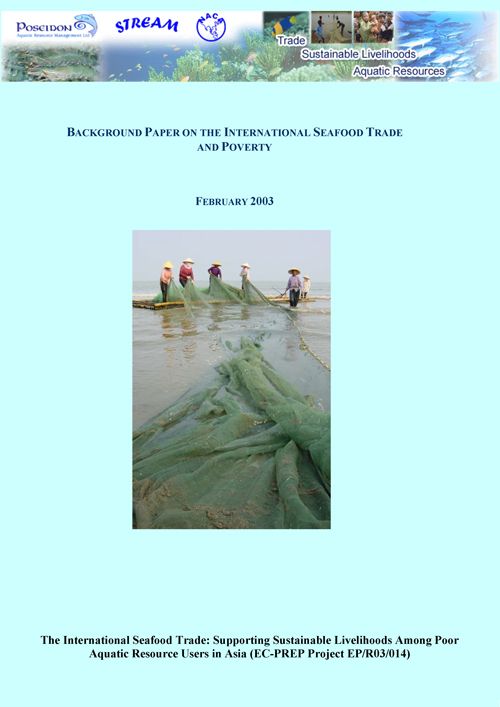The international seafood trade: Supporting sustainable livelihoods among poor aquatic resource users in Asia
18 March 2004 | Macfadyen, G., Banks, R., Phillips, M., Haylor, G., Mazaudier, L. and Salz, P. | 1726 Downloads | .pdf | 939.05 KB | Livelihoods, gender and social issues, Marine finfish, Markets and trade, Ornamentals, Shrimp
The purpose of this report is to provide an overview of the international seafood trade and poverty, with special reference to the trade in some selected marine products between Asia and the European Union. It represents Output 1 of the project “The International Seafood Trade: supporting sustainable livelihoods among poor aquatic resource users in Asia”. The report has a number of objectives, which are reflected in the chapter headings and contents. These are:
- To provide an overview of trade in marine products between Asia and the European Union, but especially of shrimp from Vietnam to the United Kingdom (UK) and BeNeLux countries, and of marine ornamental species from Indonesia and the Philippines to the UK and France. Trade between these countries of these products is planned to be the main focus of the project and of case studies to be completed to identidy pro-poor trade options.
- To map out seafood market supply chains for the countries and products under consideration.
- To provide better understanding of of policy and institutional contexts relating to such trade, at global, regional and national levels, and implications for poverty reduction, and to bring together experiences on causality between trade, policies and poverty (reduction), and any empirical evidence of causality in the fisheries sector.
- To review information on industry/market driven related experiences with poverty reduction, including recent initiatives with certification, views of buyers/supermarkets etc.
- To identify some preliminary ideas about pro-poor trade options, for futher investigation by the project case studies.
This report was been prepared by Poseidon Aquatic Resource Management Ltd and the Network of Aquaculture Centres in Asia-Pacific as part of the European Community's Poverty Reduction Effectiveness Programme (EC-PREP).
Creative Commons Attribution.

